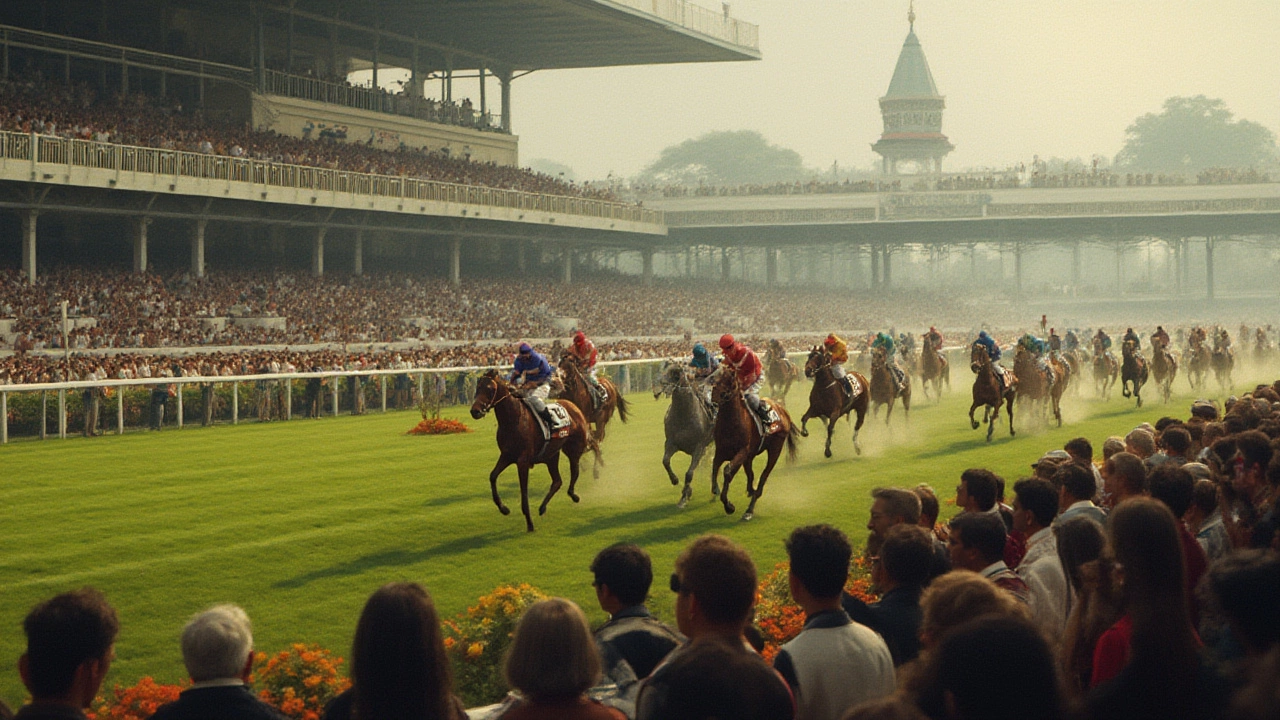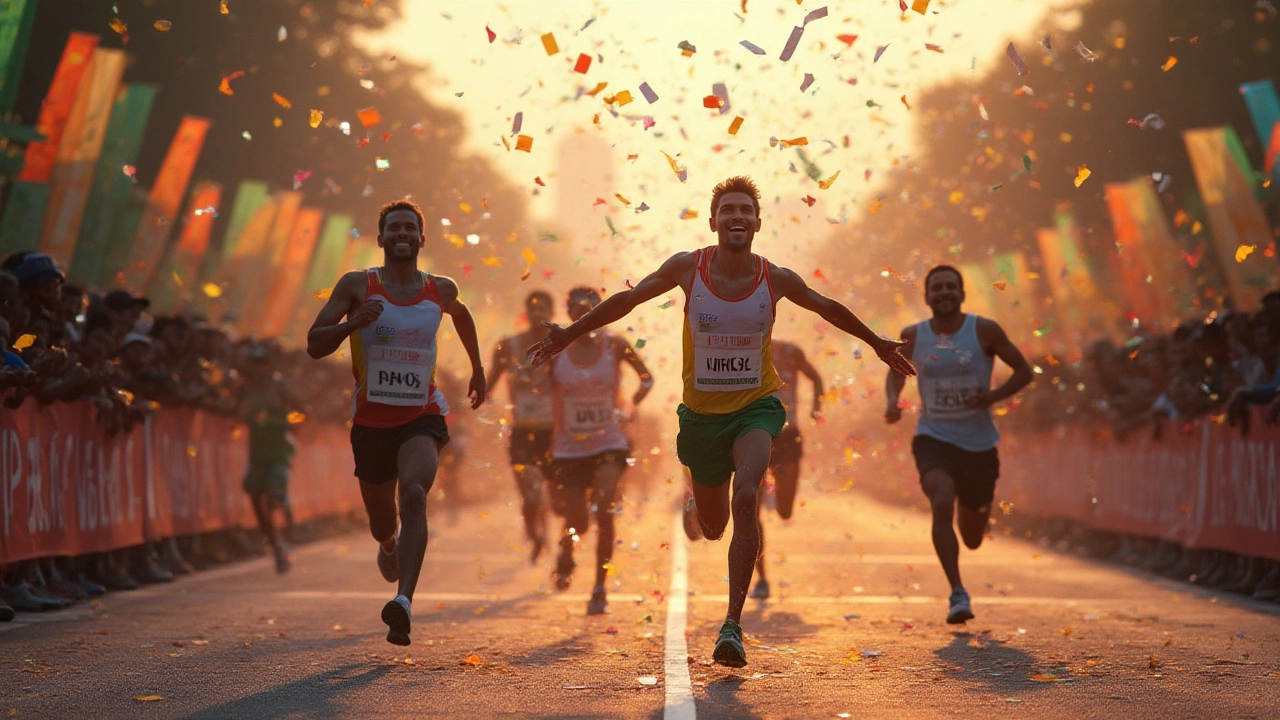Picture this: you're watching a nail-biting finish as elite athletes, legendary horses, or high-octane cars roar past the finish line—and with that, massive prize money changes hands! Big-money races have a way of capturing everyone’s imagination, blending raw talent with the kind of payouts most of us only dream about. But which races actually pay the most? Let’s peel back the curtain and take a good, honest look at the numbers, the hype, and the stories behind these jaw-dropping prize pots. Whether you’re into running shoes, horsepower, or silk silks, these races aren’t just about who’s the fastest, but who takes home the fattest check.
What Defines the Highest Paid Races?
Let’s be real: not all races are created equal when it comes to payouts. While community fun runs and local charity races build memories, it’s the iconic, globally recognized events that bring the really astonishing sums. These races range across all sorts—think motorsports, thoroughbred horse racing, and major marathons, each attracting sponsors, TV deals, and tens of thousands of screaming fans. It’s a big money show.
But what really pumps up those prize pools? It boils down to massive sponsorship, gambling, broadcast rights, and sheer popularity. For example, the highest paid races tend to hook millions of viewers with drama, glitz, or even danger. The grander the spectacle and the deeper the tradition, the bigger the rewards. A 2024 Statista chart outlines how the top ten paying races paid out more than $400 million combined in one year—and that’s just official rewards. Behind-the-scenes bonuses and endorsement deals often double or triple those numbers for winners.
Some might think all races are marathons, but that’s just the tip of the iceberg. The top list includes Formula 1 Grands Prix, horse racing’s Triple Crown, high-stakes cycling like the Tour de France, and, of course, the New York City Marathon, which offers the largest marathon purse in the world right now. Each of these races has its own twist—whether it’s the global TV audience, the huge sponsor names, or the fever-pitch betting markets.
The Kingpins: Races With Seriously Big Payouts
When people picture big money, horse racing almost always gallops into the frame. Events like the Dubai World Cup and The Everest aren’t just posh—they practically rain money. The Dubai World Cup offered an eye-popping $12 million prize in 2024, making it the richest horse race in the world. Less flashy but no less rewarding, The Everest in Australia ponied up nearly $10 million to the winner recently.
Switch gears to motorsports, and the numbers get even more dazzling. The Formula 1 Monaco Grand Prix is legendary for glitz, but when it comes to cash, the season’s final F1 race in Abu Dhabi dangles the juiciest prize. Red Bull Racing, for instance, banked $135 million in team winnings and bonuses during the 2023-2024 season. That’s not even counting the drivers’ endorsement money, which can multiply the official prizes fast.
Long-distance running doesn’t lag far behind. The New York City Marathon’s recent purse topped $900,000, with $100,000 going straight to the men’s and women’s champions—it’s the marathon world’s gold standard. Compare that with the Boston Marathon, where the top purse is $150,000, and London, just a bit behind. These races are not just about fitness—they’re an international business machine, with participants from almost 150 countries.
Here’s a quick look at some of the richest races by total purse size in 2024:
| Race Name | Type | Total Prize Money (2024) | Winner’s Share (2024) | Country |
|---|---|---|---|---|
| Dubai World Cup | Horse Racing | $12,000,000 | $7,200,000 | UAE |
| The Everest | Horse Racing | $10,000,000 | $6,000,000 | Australia |
| F1 Abu Dhabi Grand Prix | Auto Racing | $120,000,000+ (total team payouts) | $40,000,000+ (team share) | UAE |
| New York City Marathon | Running | $900,000 | $100,000 | USA |
| Tour de France | Cycling | $2,800,000 | $500,000 (Yellow Jersey winner) | France |
That table doesn’t even count the special appearance fees top athletes might snag just for showing up—or the rare “bonus for breaking a record” side deals that happen behind closed doors. Consider Serena Williams and Lewis Hamilton, two of the most famous elites, who rake in more from sponsors and win bonuses than from official prize checks. The numbers are dizzying, and it really comes down to not just what you win—but how widely you’re recognized and marketed. As ESPN’s John Barr once said,
“In today’s world, a great athlete doesn’t just run for the money—they sprint for global fame and the spotlight that can double their winnings overnight.”

Why Do Payouts Vary So Much by Race?
You might wonder: why do some races pay millions, while others barely cover a flight home? It’s not just luck. The prize money usually boils down to a mix of commercial success, location, history, and sheer audience numbers. For example, the reason the Dubai World Cup can hand out jaw-dropping checks is because the United Arab Emirates pours resources into building up the event to gigantic, televised proportions. Corporate sponsors like Emirates or Red Bull know that every dollar invested will be seen by hundreds of millions of viewers—and that makes for a marketing jackpot.
Another big factor is betting. Horse races with the biggest pots—like the Kentucky Derby and the Melbourne Cup—pull in rivers of cash from wagers worldwide. The more people bet, the bigger the money pool, and a chunk goes right to the winners. Motorsport’s prize funds run high not just from TV deals, but car makers and global sponsors fighting for every second of airtime. Formula 1, for example, splits a massive pot—often over $1 billion—among teams each season based on performance, history, and audience pull.
Then there’s tradition. Races like the Boston Marathon have old-school prestige, but the newer, more TV-friendly courses like New York or Berlin grab the fattest corporate checkbooks. Newer races hustle to up their profile fast, promising big purses to attract the world’s fastest legs—or wheels. Even world-famous cycling, like the Tour de France, earns huge sponsorship deals based largely on its global TV reach, with almost 200 countries now broadcasting the event live.
Here’s a breakdown to explain the big drivers of race rewards:
- Sponsorship and Advertising: The more appealing the race is to advertisers, the bigger the prizes.
- Betting and Gambling: High-stakes wagering can add millions to a purse.
- TV Broadcast Rights: Races seen by millions around the world draw the cash.
- Celebrity Status: The more famous the field, the better the payouts—big names bring more eyes (and more money).
- International Travel and Tourism: Cities with global pull can charge more for hosting and pour more into prizes.
So, if you’re chasing the dream of big winnings, it’s not just about being the fastest—it’s about picking the right race. There’s a reason you don’t see $10 million purses at a local 5K: those races are about grit and fun, not global TV contracts. Even the top marathons see elite fields with just a handful of runners who can actually chase the top dollar. For everyone else, it’s about the love of the sport, the rush of crossing the finish line, and the hope that one day, maybe, they’ll be racing for millions.
Tips for Getting Involved—And Maybe Chasing That Prize Money!
If reading about record wins sparks a little inspiration, you’re not alone. Every year, thousands try to qualify for one of these big-league races, dreaming of standing on the winner’s podium. But breaking into the world of high-dollar races isn’t just about showing up and hoping for the best. It takes savvy, training—and a little bit of luck.
First, know your sport. If you’re hoping to chase riches at something like the New York City Marathon, you’ll need to qualify through strict standards—sub-2:19 pace for men, sub-2:45 for elite women, and rigorous entry times for age-group hopefuls. Similar qualifying times exist for other world marathons. Track your races, train under a coach, and invest time in proven marathon training programs.
For horse racing, owning (or training) a globe-class thoroughbred is a different world altogether. Owners often put up significant upfront cash to enter the richest races, hoping a big win (or even a place at stud for the horse afterward) will pay off. The Everest, for instance, works on a “buy-in” system—slot holders have to pay $600,000 AUD just for a shot at the purse.
Motorsport hopefuls need big support from sponsors and teams—just competing in a Formula 1 race requires millions in backing, years of junior driving, and connections to be noticed by the right team at the right moment. And cycling? It’s a mix of team result, individual prowess, and long seasons grinding out stage wins before that yellow jersey becomes even a possibility.
So where can an everyday athlete start? Here are a few practical tips if you want to break into the world of prized races (or just get a feel for how the pros do it):
- Join local races for experience; many successful athletes started at community events before getting noticed.
- Seek sponsorships early, whether through small businesses or local supporters—having backers helps for travel, equipment, and more.
- Network relentlessly; the sports world is tight-knit, so making the right connections can fast-track a rising star.
- Follow race blogs, financial breakdowns, and pro-athlete interviews to learn where the real money flows.
- Don’t forget the less-visible races: some triathlons, adventure races, and even obscure cycling events occasionally hand out major prizes.
And of course, remember: very few people actually hit it big. For every Formula 1 champion, there are hundreds of talented drivers stuck in smaller circuits waiting for just one chance at the spotlight. For most, the community, support, and pure thrill of racing count for more than the size of a check.
Still, the next time you’re watching a grand finale—on the road, the racetrack, or in a muddy field—remember there’s more than just a trophy at stake. For a lucky few, these races offer not just fame, but the kind of payout that can change a life in one ecstatic, photo-finish moment.





